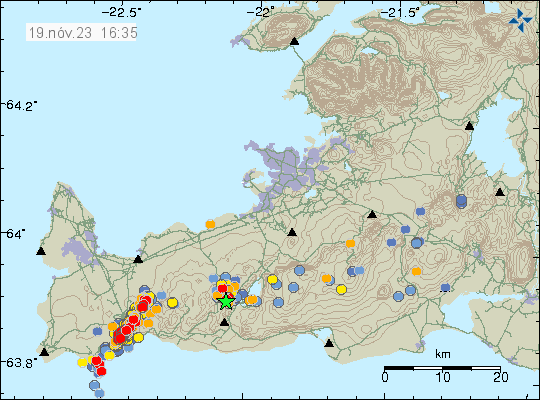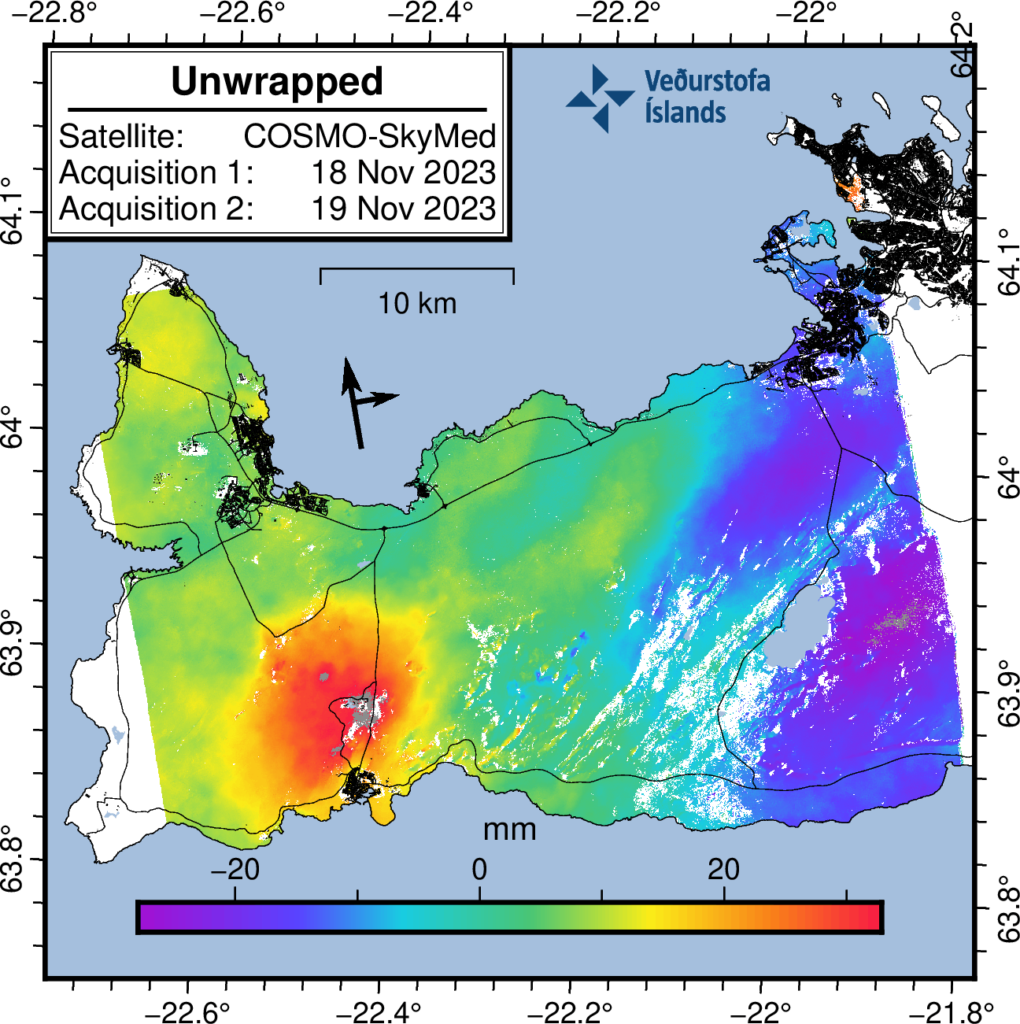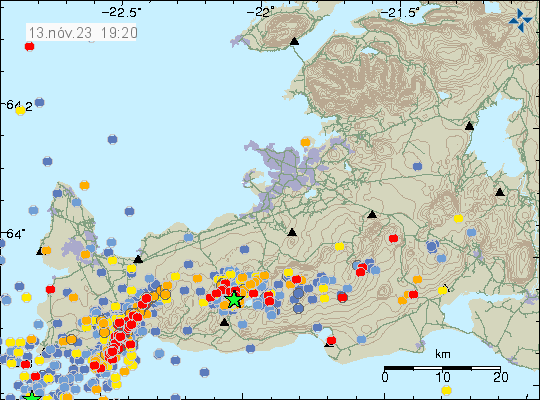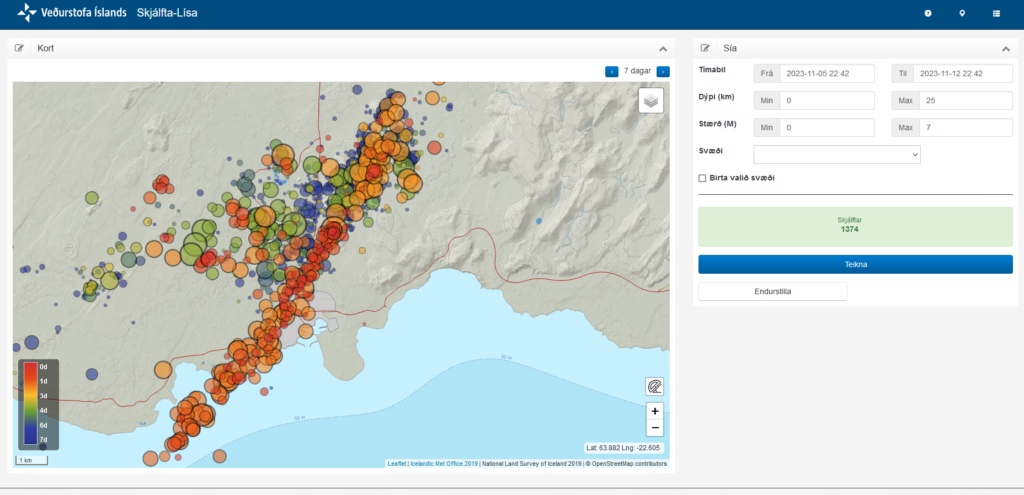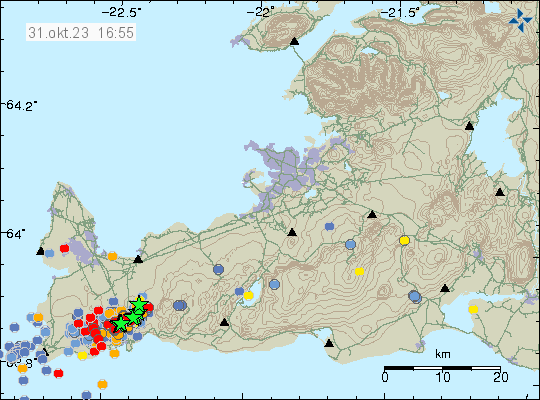This is a short update for Grindavík and nearby area on 28. November 2023. This article is written at 23:22 UTC. This is a short update and information here can go outdated quickly and without warning.
Last few days have been quiet with little or few earthquakes. There have been earthquake swarm activity at times, suggesting that magma is trying to push at faster rate into the crust at Sundhnúkagígar and Sundhnúkar mountain. I don’t know what the current rate of magma inflow is.
Daily information
- Magma continues to flow into the dyke. I don’t know how fast that rate is.
- The dyke is wider than originally thought. This means it cools down more slowly. The dyke is widest around Sundhnúkar and Sundhnúkargígar area.
- Eruption can start without warning in Sundhnúkar or Sundhnúkargígar and that area.
- New cracks continue to form in Grindavík, along with sink holes and other issues that is creating.
- Inflation at Svartsengi is around 10mm/day and up to 40mm/day. Currently, the inflation has slowed down to 10mm/day. This can change without warning.
- Top of Keilir mountain has moved according to the news. I don’t know how much. But this is a displacement.
- Rocks with the size of mobile homes have moved and rolled down from mountains.
- Cracks are forming in a wide area around the dyke according to the news. Making it dangerous to travel in the area around Grindavík because of this new cracks in the ground.
The event in Grindavík and nearby area is not over. It is ongoing, this is just a quiet time period that is currently happening. This quiet time period is going to happen frequently in the Reykjanes volcano system. I don’t know why that is the case, this is the reality of what is going on.
Article updated at 23:56. I forgot to add few things.




